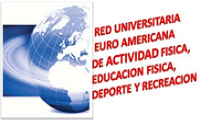Characterization of the cognitive processes related to directed attention in natural environments and their relationship with physical activity. A review on university students
Abstract
The aim of the present work is to review the bibliography that has compared the effect of physical activity (PA) performed in different environments, such as natural (AFMN) and artificial (AFEA), on directed attention (SA). For this purpose, a search has been made in different databases such as PubMed, Google academic and Sports DISCUS. All the searches were done from January 2000 to December 2019 using keywords such as directed attention, green exercise, physical activity or university students. In addition, articles were excluded if the population was not exclusively university students or if methodological did not specify variables such as the type of exercise performed or the AS measurement test. A total of six articles were selected which fully met the inclusion criteria. From the analysis of these investigations it was concluded that the effect of the AFMN is not significatively greater than the AEFA on the SA. Several methodological improvements are recommended for future research.
Downloads
References
Åberg, M. A. I., Pedersen, N. L., Torén, K., Svartengren, M., Bäckstrand, B., Johnsson, T., … Kuhn, H. G. (2009). Cardiovascular fitness is associated with cognition in young adulthood. Proceedings of the National Academy of Sciences of the United States of America, 106(49), 20906–20911. https://doi.org/10.1073/pnas.0905307106
Álvarez-Bueno, C., Pesce, C., Cavero-Redondo, I., Sánchez-López, M., Martínez-Hortelano, J. A., & Martínez-Vizcaíno, V. (2017). The Effect of Physical Activity Interventions on Children’s Cognition and Metacognition: A Systematic Review and Meta-Analysis. Journal of the American Academy of Child and Adolescent Psychiatry. American Academy of Child & Adolescent Psychiatry. https://doi.org/10.1016/j.jaac.2017.06.012
Berman, M. G., Jonides, J., Kaplan, S., Berman, M. G., Jonides, J., & Kaplan, S. (2008). The Cognitive Benefits of Interacting With Nature. https://doi.org/10.1111/j.1467-9280.2008.02225.x
Berto, R. (2005). Exposure to restorative environments helps restore attentional capacity. Journal of Environmental Psychology, 25, 249–259. https://doi.org/10.1016/j.jenvp.2005.07.001
Biddle, S. J. H., & Asare, M. (2011). Physical activity and mental health in children and adolescents: A review of reviews. British Journal of Sports Medicine, 45(11), 886–895. https://doi.org/10.1136/bjsports-2011-090185
Bodin, M., & Hartig, T. (2003). Does the outdoor environment matter for psychological restoration gained through running? Psychology of Sport and Exercise, 4(2), 141–153. https://doi.org/10.1016/S1469-0292(01)00038-3
Bowler, D. E., Buyung-ali, L. M., Knight, T. M., & Pullin, A. S. (2010). A systematic review of evidence for the added benefits to health of exposure to natural environments.
Bratman, G. N., Daily, G. C., Levy, B. J., & Gross, J. J. (2015). Landscape and Urban Planning The benefits of nature experience : Improved affect and cognition. Landscape and Urban Planning, 138, 41–50. https://doi.org/10.1016/j.landurbplan.2015.02.005
Bratman, G. N., Hamilton, J. P., & Daily, G. C. (2012). The impacts of nature experience on human cognitive function and mental health, 1249, 118–136. https://doi.org/10.1111/j.1749-6632.2011.06400.x
Chaddock, L., Erickson, K. I., Prakash, R. S., Kim, J. S., Voss, M. W., Vanpatter, M., … Kramer, A. F. (2010). A neuroimaging investigation of the association between aerobic fitness, hippocampal volume, and memory performance in preadolescent children. Brain Research, 1358, 172–183. https://doi.org/10.1016/j.brainres.2010.08.049
Coles, K., & Tomporowski, P. D. (2008). Effects of acute exercise on executive processing, short-term and long-term memory. Journal of Sports Sciences, 26(3), 333–344. https://doi.org/10.1080/02640410701591417
Coon, J. T., Boddy, K., Stein, K., Whear, R., Barton, J., & Depledge, M. H. (2011). Does Participating in Physical Activity in Outdoor Natural Environments Have a Greater Effect on Physical and Mental Wellbeing than Physical Activity Indoors ? A Systematic Review, 1761–1772.
Dadvand, P., Nieuwenhuijsen, M. J., Esnaola, M., Forns, J., & Basagaña, X. (2015). Green spaces and cognitive development in primary schoolchildren, 1–6. https://doi.org/10.1073/pnas.1503402112
Diamond, A. B. (2015). The Cognitive Benefits of Exercise in Youth. Current Sports Medicine Reports, 14(4), 320–326. https://doi.org/10.1249/JSR.0000000000000169
Donnelly, J. E., Hillman, C. H., Castelli, D., Etnier, J. L., Lee, S., Tomporowski, P., … Szabo-Reed, A. N. (2016). Physical activity, fitness, cognitive function, and academic achievement in children: A systematic review. Medicine and Science in Sports and Exercise, 48(6), 1197–1222. https://doi.org/10.1249/MSS.0000000000000901
Ekkekakis, P., Hall, E. E., Vanlanduyt, L. M., & Petruzzello, S. J. (2000). Walking in ( Affective ) Circles : Can Short Walks Enhance Affect ?, 23(3), 245–275.
Erickson, K. I., Prakash, R. S., Voss, M. W., Chaddock, L., Hu, L., Morris, K. S., … Kramer, A. F. (2009). Aerobic fitness is associated with hippocampal volume in elderly humans. Hippocampus, 19(10), 1030–1039. https://doi.org/10.1002/hipo.20547
Fuegen, K., & Breitenbecher, K. H. (2018). Walking and being outdoors in nature increase positive affect and energy. Ecopsychology, 10(1), 14–25. https://doi.org/10.1089/eco.2017.0036
Gatersleben, B., & Andrews, M. (2013). Health & Place When walking in nature is not restorative — The role of prospect and refuge. Health & Place, 20, 91–101. https://doi.org/10.1016/j.healthplace.2013.01.001
Geniole, S. N., David, J. P. F., Euze, R. F. R., Toledo, B. Z. S., & Neves, A. I. M. (2016). The Benefits of an Outdoor Walk Landfill Area Relative to Its Neighboring, 8(2), 107–120. https://doi.org/10.1089/eco.2016.0005
Hartig, T., Evans, G. W., Jamner, L. D., Davis, D. S., & Gärling, T. (2003). Tracking restoration in natural and urban field settings. Journal of Environmental Psychology, 23(2), 109–123. https://doi.org/10.1016/S0272-4944(02)00109-3
Hartig, T., Mitchell, R., de Vries, S., & Frumkin, H. (2014). Nature and Health. Annual Review of Public Health, 35(1), 207–228. https://doi.org/10.1146/annurev-publhealth-032013-182443
Hillman, C. H., Kamijo, K., & Scudder, M. (2011). A review of chronic and acute physical activity participation on neuroelectric measures of brain health and cognition during childhood. Preventive Medicine. Elsevier Inc. https://doi.org/10.1016/j.ypmed.2011.01.024
Jo, H., Song, C., & Miyazaki, Y. (2019). Physiological benefits of viewing nature: A systematic review of indoor experiments. International Journal of Environmental Research and Public Health. https://doi.org/10.3390/ijerph16234739
Kaplan, R. (1993). The role of nature in the context of the workplace, 26, 193–201.
Kaplan, S. (1995). The restorative benefits of nature: Toward an integrative framework. Journal of Environmental Psychology, 15(3), 169–182. https://doi.org/10.1016/0272-4944(95)90001-2
Kuo, M., Barnes, M., Jordan, C., & Snell, T. L. (2019). Do Experiences With Nature Promote Learning ? Converging Evidence of a Cause-and-Effect Relationship, 10(February), 1–9. https://doi.org/10.3389/fpsyg.2019.00305
Lahart, I., Darcy, P., & Gidlow, C. (2019). The E ff ects of Green Exercise on Physical and Mental Wellbeing : A Systematic Review.
Li, D., & Sullivan, W. C. (2016). Landscape and Urban Planning Impact of views to school landscapes on recovery from stress and mental fatigue. Landscape and Urban Planning, 148, 149–158. https://doi.org/10.1016/j.landurbplan.2015.12.015
Maureira Cid, F., & Flores Ferro, E. (2017). Efectos del ejercicio físico sobre la atención: una revisión de los últimos años. / Effects of the physical exercise on the attention: a review of last years. Revista Ciencias de La Actividad Física UCM, 18(1), 73–83. Retrieved from http://search.ebscohost.com/login.aspx?direct=true&db=sph&AN=124347757&site=ehost-live
Mayer, F. S., & Bruehlman-Senecal, E. (2008). Why Is Nature Beneficial ? The Role of Connectedness to Nature. Environment and Behavior, 1–37. https://doi.org/10.1177/0013916508319745
Pretty, J., Peacock, J., Hine, R., Sellens, M., South, N., & Griffin, M. (2007). Green exercise in the UK countryside: Effects on health and psychological well-being, and implications for policy and planning. Journal of Environmental Planning and Management, 50(2), 211–231. https://doi.org/10.1080/09640560601156466
Pretty, Jules. (2004). How nature contributes to mental and physical health. Spirituality and Health International, 5(2), 68–78. https://doi.org/10.1002/shi.220
Pretty, Jules, Peacock, J., Sellens, M., & Griffin, M. (2005). The mental and physical health outcomes of green exercise. International Journal of Environmental Health Research, 15(5), 319–337. https://doi.org/10.1080/09603120500155963
Rider, N. D., & Bodner, G. E. (2016). Does Taking a Walk in Nature Enhance Long-Term Memory? Ecopsychology, 8(1). https://doi.org/10.1089/eco.2015.0042
Rogerson, M., Gladwell, V. F., Gallagher, D. J., & Barton, J. L. (2016). Influences of Green Outdoors versus Indoors Environmental Settings on Psychological and Social Outcomes of Controlled Exercise. https://doi.org/10.3390/ijerph13040363
Santana, C. C. A., Azevedo, L. B., Cattuzzo, M. T., Hill, J. O., Andrade, L. P., & Prado, W. L. (2016). Physical fitness and academic performance in youth : A systematic review, 1–25. https://doi.org/10.1111/sms.12773
Song, C., Ikei, H., & Miyazaki, Y. (2016). Physiological Effects of Nature Therapy : A Review of the Research in Japan Physiological Effects of Nature Therapy : A Review of the Research in Japan, (August). https://doi.org/10.3390/ijerph13080781
Tomporowski, P. D., & Ganio, M. S. (2006). Short‐term effects of aerobic exercise on executive processing, memory, and emotional reactivity. International Journal of Sport and Exercise Psychology, 4(1), 57–72. https://doi.org/10.1080/1612197x.2006.9671784
The works and papers that are published in this Journal are subject to the following terms:
1. The Publication Service of the University of Murcia (the publisher) has the Publication Rights (Copyright) to the published papers and works, and favors and permits the reusing of the same under the license indicated in point 2.
© Servicio de Publicaciones, Universidad de Murcia, 2013
2. The papers and works are to be published in the digital edition of the Journal under the license Creative Commons Reconocimiento-No Comercial-Sin Obra Derivada 3.0 España (legal text). The copying, using, spreading, transmitting and publicly displaying of the papers, works or publication are permitted as long as: i) the authors and original sources (Journal, publisher and URL of the publication) are quoted; ii) it is not used for commercial benefit; iii) the existence and specifications of this users license are mentioned.
3. Conditions of Self-Archiving. It is permitted and encouraged that the authors spread electronically the pre-print (before printing) and/or post-print (the revised, evaluated and accepted) versions of their papers or works before their publication since this favors their circulation and early diffusion and therefore can help increase their citation and quotation, and also there reach through the academic community.
The works and papers that are published in this Journal are subject to the following terms:
1. The Publication Service of the University of Murcia (the publisher) has the Publication Rights (Copyright) to the published papers and works, and favors and permits the reusing of the same under the license indicated in point 2.
© Servicio de Publicaciones, Universidad de Murcia, 2013
2. The papers and works are to be published in the digital edition of the Journal under the license Creative Commons Reconocimiento-No Comercial-Sin Obra Derivada 3.0 España (legal text). The copying, using, spreading, transmitting and publicly displaying of the papers, works or publication are permitted as long as: i) the authors and original sources (Journal, publisher and URL of the publication) are quoted; ii) it is not used for commercial benefit; iii) the existence and specifications of this users license are mentioned.
3. Conditions of Self-Archiving. It is permitted and encouraged that the authors spread electronically the pre-print (before printing) and/or post-print (the revised, evaluated and accepted) versions of their papers or works before their publication since this favors their circulation and early diffusion and therefore can help increase their citation and quotation, and also there reach through the academic community.




















